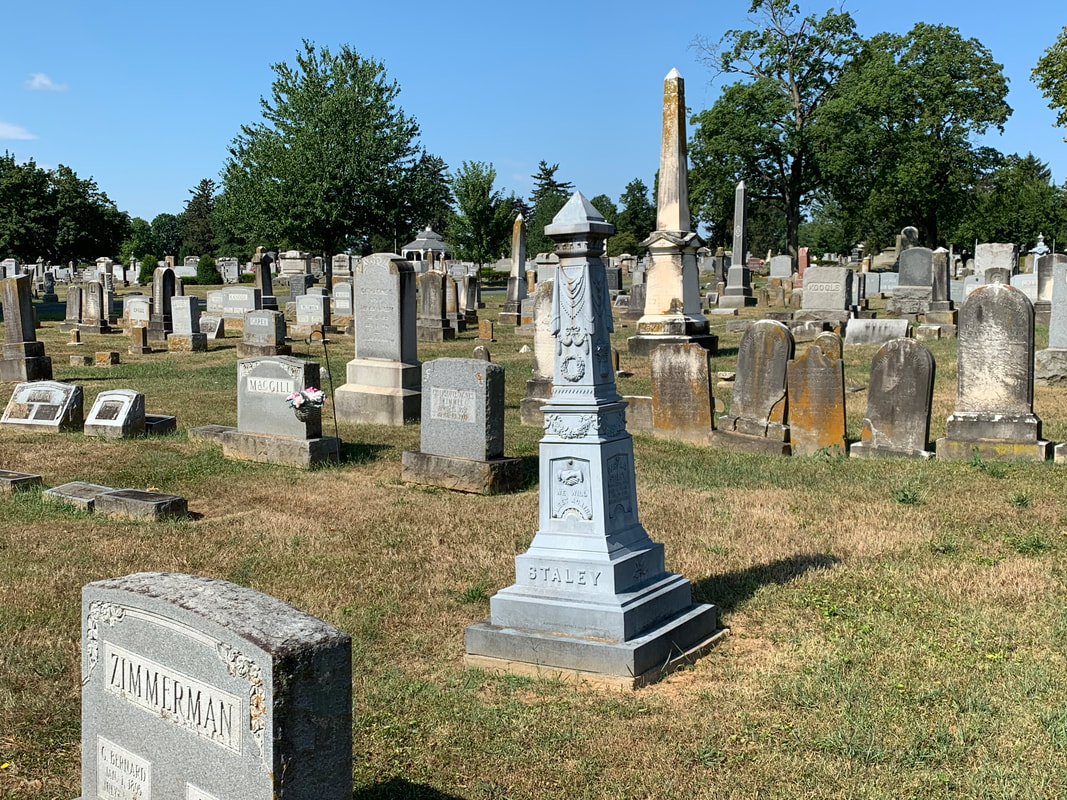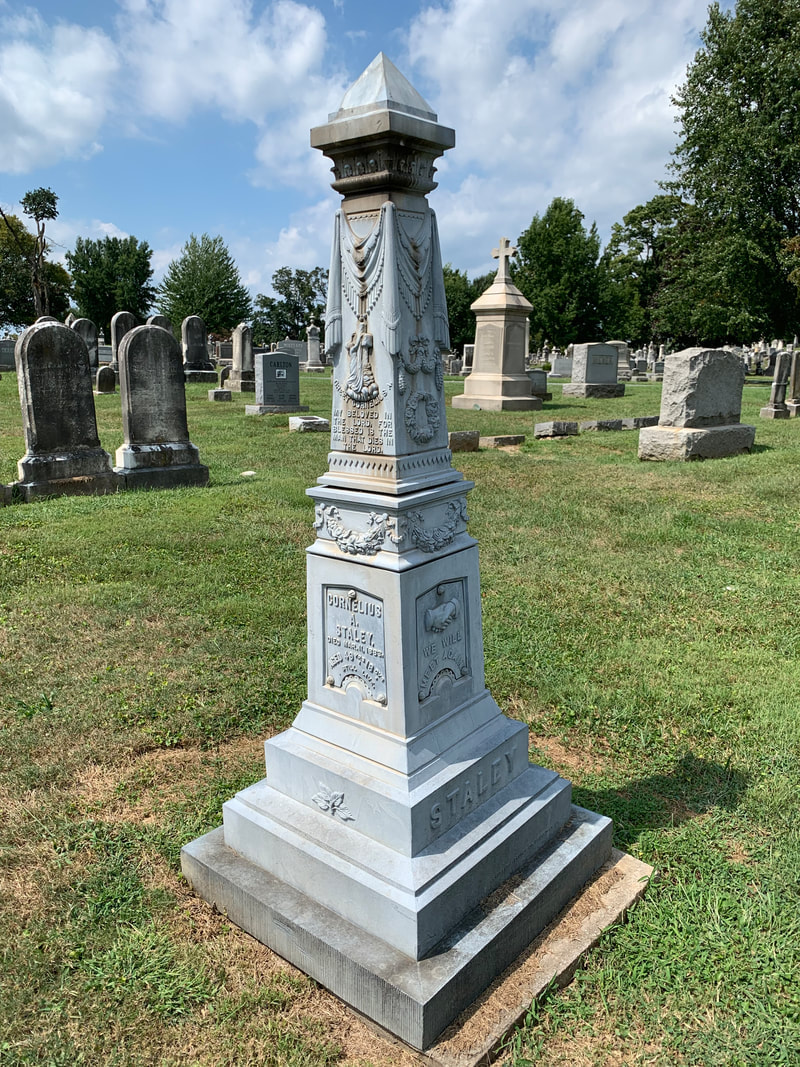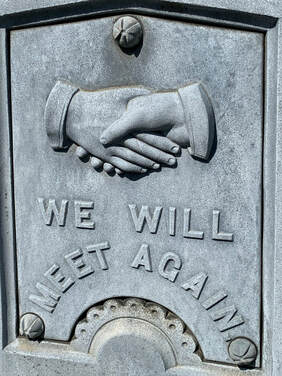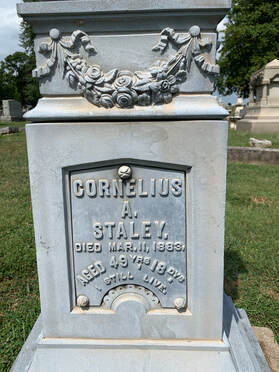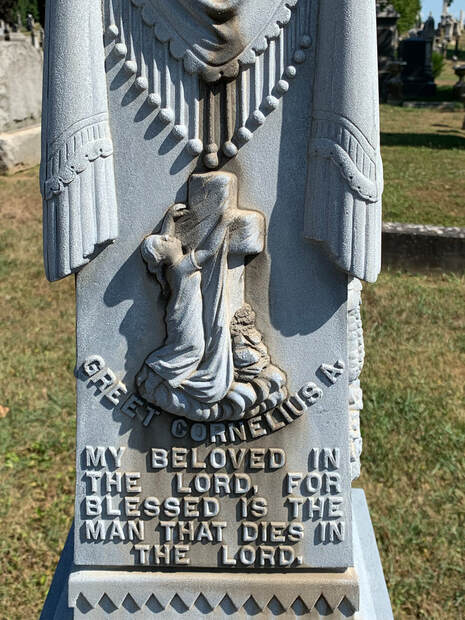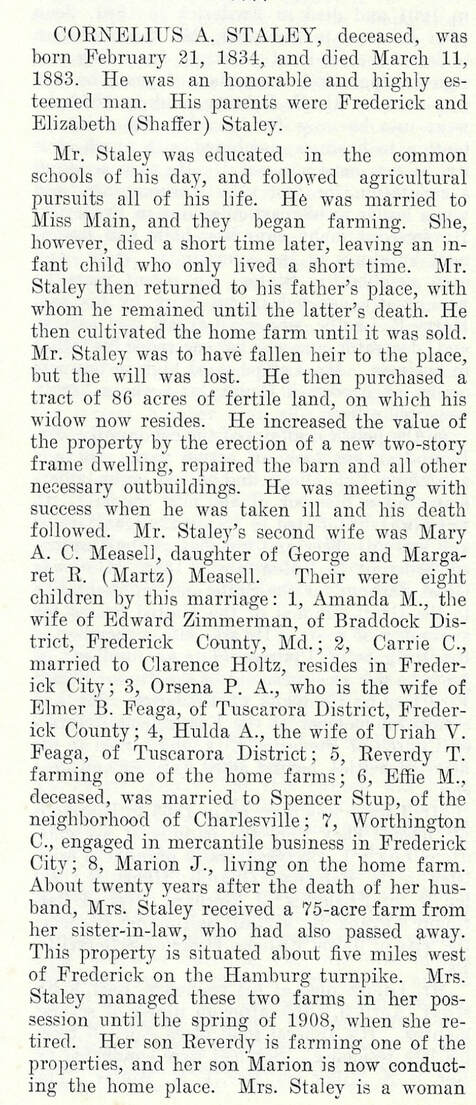Capt. Cornelius A. Staley "White Bronze" Marker
Location: Area P/Lot 139
Date of Placement: after 1883
Decedents: Capt. Cornelius A. Staley and wife Mary A. C. Staley
Monument inducted into the Hall in August 2022 (Class #2)
Location: Area P/Lot 139
Date of Placement: after 1883
Decedents: Capt. Cornelius A. Staley and wife Mary A. C. Staley
Monument inducted into the Hall in August 2022 (Class #2)
At first glance you may, or may not notice, something quite peculiar about this monument. Unlike its lithic brethren here in Mount Olivet, it is man-made of metal and not a carved stone from nature. This was a very popular and stylish type of grave memorial that arose in the last few decades of the 19th century and known as “white bronze” markers. We have 20 of this unique variety here in the cemetery.
These standout funerary memorials (also nicknamed "Zinkies") were the brainchild of a man named Milo Amos Richardson (1820-1900) and business partner and brother-in-law, C. J. Willard. Mr. Richardson worked as a cemetery superintendent in Chautauqua County, New York, and had observed the need for a new and better material for cemetery monuments. He set out to develop a solution of creating a material for memorials that would repel moss, algae and lichen, invasive and unwelcome guests that take up residence on traditional gravestones, especially monuments in shady locations within cemeteries characterized by abundant tree cover or dampness.
Richardson and Willard’s formula centered on the use of zinc carbonate. Amos Richardson, along with two business partners, tried to get a company off the ground but failed. In 1879, the rights were sold and a new company, the Monumental Bronze Company, was incorporated in Bridgeport, Connecticut to manufacture these new monuments.
These standout funerary memorials (also nicknamed "Zinkies") were the brainchild of a man named Milo Amos Richardson (1820-1900) and business partner and brother-in-law, C. J. Willard. Mr. Richardson worked as a cemetery superintendent in Chautauqua County, New York, and had observed the need for a new and better material for cemetery monuments. He set out to develop a solution of creating a material for memorials that would repel moss, algae and lichen, invasive and unwelcome guests that take up residence on traditional gravestones, especially monuments in shady locations within cemeteries characterized by abundant tree cover or dampness.
Richardson and Willard’s formula centered on the use of zinc carbonate. Amos Richardson, along with two business partners, tried to get a company off the ground but failed. In 1879, the rights were sold and a new company, the Monumental Bronze Company, was incorporated in Bridgeport, Connecticut to manufacture these new monuments.
One more innovation (that white bronze made possible) resided in the opportunity for customers to employ a myriad of popular symbols and designs of the late Victorian period on these unique monuments. These beautifully ornate memorials became a high-selling novelty especially in the northeast, and the examples that have remained are well over a century old and look virtually new, so to speak! The name “white bronze” was given as it certainly sounded more elegant than zinc.
As for Captain Cornelius Staley, I've included his biography below and taken from Williams' History of Frederick County.
As for Captain Cornelius Staley, I've included his biography below and taken from Williams' History of Frederick County.

